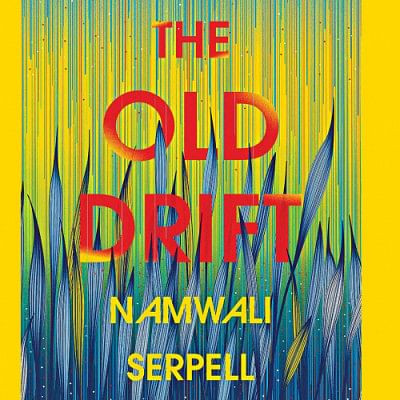The Metamorphosis of a Country

The epigraph of The Old Drift (Hogarth Press, 2020), taken from Vigil's The Aeneid, briefly narrates the story of a diverse civilisation thriving on the banks of Lethe, the river of forgetfulness that "somnolently" drifts past a "populous throng" of spirits. In Namwali Serphell's novel, the civilisation is Zambia, the Lethe's amnesia is the passage of time, and the spirits are a swarm of prophetic mosquitoes.
An intergenerational saga leaping from colonial to modern to a near-future Zambia set in 2024, The Old Drift tells the story of the country through the eyes of three generations: The Grandmothers, The Mothers, and The Children. Although Zambia's colonial past gets lost in the riverine passage of time as symbolised by the Lethe, indelible imprints of that past remain on the present, on the beginnings of the three generations' stories, and the interracial social fabric uniting them. At the end of each character's story, a swarm of mosquitoes narrates a summary and predict the characters' fate. In doing so, they become a bridge connecting the evolution of Zambia and its characters.
In an interview with the Reading Women podcast, Serpell shared that she wanted to explore the idea of a storm of errors and accidents guiding a narrative forward. This is exactly what she does. It all starts in the 19th century with the brutish act of a colonial settler Percy M Clark, in a settlement known as Old Drift around Victoria Falls. "That tiny chaos, like one of our wings, sets in motion the unwitting cycle: it will spiral across families for generations to come," the swarm of mosquitoes narrates.
In every generation that follows, errors and accidents propel the story and shine a light on the evolution of Zambia from a colonial playground to one of the many posts of the Cold War, AIDS outbreak, globalisation, and fictional technology like 'Moskeetoze' and 'Digit-all Beads'.
The novel refuses to be shackled by the tags of genre. It drifts in the haze of historical and science fiction, magical and social realism.
Through the character of Sibilla, one of the three Grandmothers, Serpell infuses the element of magic realism—Sibilla is covered head to toe with dense hair; if triggered, the long strands can create whirlwinds. Matha, one of the other Grandmothers who dresses up as a boy to receive education, illuminates Zambia's historic 'Afronaut' Space Program, for which science teacher Edward Makuka Nkoloso trained astronauts for a journey to the moon by putting them inside oil drums and rolling them down the hills. Matha's daughter and one of The Mothers, Sylvia serves as a focal point of the AIDS epidemic in Zambia. The Children Jacob, Naila, and Joseph survey the rough terrains of the competitive, chaotic, and capitalistic world of a "woke" 21st century.
In no way does this novel follow a linear plot. Instead, it is driven haphazardly by the characters' actions and rides on the tides of time, exploring marriage, romance, politics, colonisation, disability, diseases, the ills of development, poverty, violence, grief, and a technologically driven authoritarian future.
As an enthusiast of intergenerational family sagas, I can say that The Old Drift, with its genre-bending elements, outshines others of its kind that I have read. Its use of local language and historic anecdotes challenges the reader to conduct their share of research to understand a certain elusive block of text. Serpell's language is also loaded with poetry, wit, and humour. It never falls into the trap of sounding didactic or encyclopaedic.
Readers from countries that have colonial pasts can easily sense the sweeping meditation on colonialism that The Old Drift essentially is. They can sense how their countries, too, like Zambia, are "a lazy, loose curve" into which time accidentally strayed, bearing colonisers on its back, and subsequently mobilised the turbulent births of nations. Those interested in intergenerational novels that trace the course of a country should not miss this book.
Shah Tazrian Ashrafi is a contributor.

 For all latest news, follow The Daily Star's Google News channel.
For all latest news, follow The Daily Star's Google News channel. 



Comments